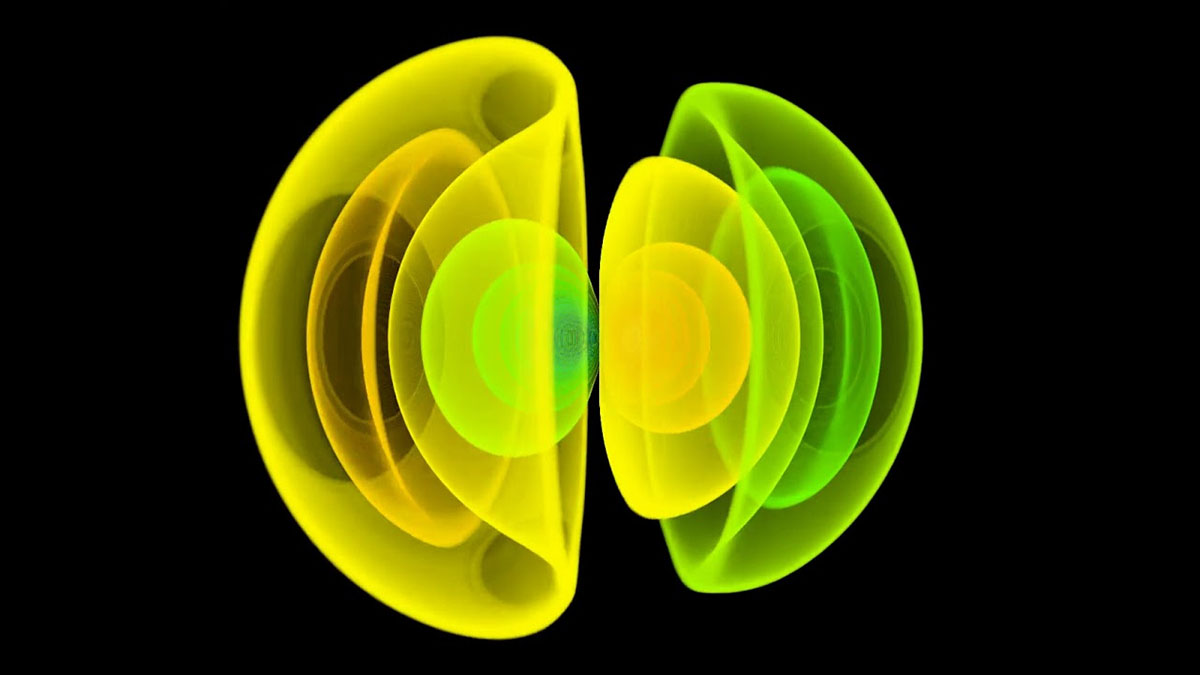did a scientist accidentally create a warp bubble? not exactly.

It was the popular science headline blasted across the internet. A real, honest to goodness, peer-reviewed warp bubble invisible to the naked eye but surely a step towards actual, real warp travel. Unfortunately, it’s not entirely true according to physicist and science educator Ethan Siegel. The bubble was simulated, and rather than demonstrating a new phenomenon, the paper actually describes a possible manifestation of a quantum effect we observe all the time, then tries to model how it could be used to create teeny tiny warp bubbles. It’s actually a worthy hypothesis but lead investigator Harold “Sonny” White blew the paper’s results out of proportion to tease media outlets, something he’s pretty infamous for doing.
So, what is this quantum phenomenon? It’s known as the Casimir effect, and you’ve probably heard of it in the context of “free energy” conspiracy theories. One of the most revolutionary realizations for physicists was to find evidence that empty space itself isn’t really empty and devoid of energy. As it so turns out, the very fabric of space and time emits a low, background hum of self-annihilating matter and anti-matter fields which form what’s commonly known as the quantum foam. Physicists Hendrik Casimir and Dirk Polder proposed that the existence of this quantum foam would create a physical force that acts on even seemingly neutral atoms in an otherwise empty space.
Early work on this subject created papers adopted by conspiracy theorists hoping that secretly, our civilization was farther along than it really was, and governments, along with Big Oil and Coal were deliberately hiding machines to tap into that background churn of spacetime for a steady flow of free energy, which isn’t what’s happening, and wouldn’t actually do us any good because the whole notion relies of a fundamental ignorance of the underlying science. Far from trying to harness the energy of the universe’s expansion, Casimir was actually just trying to see what forces dominated on the smallest possible scales, and the effect named after him was to help measure them with two conducting plates in a lab setting.
All right, you may be nodding along, what exactly does all this have to do with warp drives? Well, to make a warp bubble, we need to bend and distort space around spacecraft, pushing ships along with it as the front of the bubble expands while the back contracts. And if space has a non-zero energy density already, and we can somehow manipulate that, why couldn’t we try to mess with it enough to eventually force space to fold in on itself? That’s the question White’s paper tackled and says should be possible, at least on the scale of atoms. If we can then find the required amount of energy to alter the quantum foam in a very similar way for bigger objects, a warp drive becomes just a matter of having sufficiently good reactors or batteries.
But that’s a very big if. One of the biggest mysteries of physics today is whether phenomena we see with atoms and subatomic particles can actually scale to humans and space stations. Since different forces seem to dominate at different scales, it takes very special circumstances to get even large molecules to act like quantum phenomena, and we’ve yet to even see warp bubbles around single atoms outside of computer simulations and speculative equations. We seem to be zeroing in on harnessing the Casimir effect as a trigger mechanism for warp drives that we know we’ll have to build to truly explore the cosmos, but it’s still a very long, unsure road to creating one at any scale at all, no matter what your news feed says.





